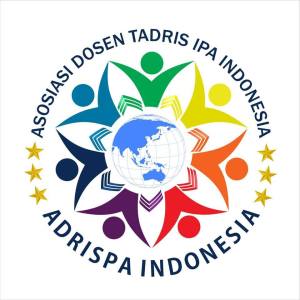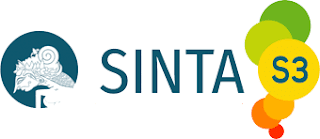Author Guidelines
This guideline for writing the manuscript for Integrative Science Education and Teaching Activity Journal (INSECTA) submission and this guideline is available online at author guideline page on official website at: https://jurnal.iainponorogo.ac.id/index.php/insecta.
All information about the formatting requirements is contained in this template. Please review it carefully. You may use the document as a template and copy/paste the contentof your article here ”“ this is probably the easiest option. Several styles have been included in this template to facilitate formatting ”“ you may find it easier to use them instead of formatting each segment differently.
The limitations on the length of the document are as follows.
- The abstract should not exceed 200 words; further, the title, authors, abstract, keywords, and references are excluded from (but all text, figures, tables, and appendices are included in) the overall page counts given next. The number of page of each paper is one’s (1) pages. (Times New Roman, 10). Keywords: words or phrases which are important, specific, or representative to the article.
- The article should be written between approximately 4000-6000 words including body text, all tables, figures, notes, and the reference list. The article should be written in word document (MS word), 1 space (single space), and Times New Roman style. Paper should be in prepared in A4 paper (21cm x 29.7cm) using 2,54 cm for inside margin, 2,54 cm for outside margin, and 2,54 cm for top and bottom. No need to alter page number in this template as the page number will be reordered at preprinting process.
- Authors are suggested to present their articles in the section structure: Introduction - Method - Results and Discussion ”“ Conclusion - References. (Justify, Times New Roman 12). (Times New Roman, 12).
- Organization and citation of the bibliography are made in American Psychological Association 7th. The terms in foreign languages are written italic (italic).
- The Introduction should provide a clear background, a clear statement of the problem, the relevant literature on the subject, the proposed approach or solution, and the new value of research which it is innovation. It should be understandable to colleagues from a broad range of scientific disciplines.
- The Method is Explaining research chronological, including research method, research design, research procedure (in the form of algorithms, flow chart, storyboard or other), how to test and data acquisition, time and place of the research (if the article based on the field research), mention the hypothesis if your article has it (optional). The description of the course of research should be supported by references, so the explanation can be accepted scientifically.
- The Result and discussion consist of the research findings, including description of the collected data, analysis of the data, and interpretation of the data using the relevant theory. It should be clear and concise. Discussion should explore the significance of the results of the work, not repeat them. Avoid extensive citations and discussion of published literature.
- Number tables consecutively in accordance with their appearance in the text. Title of the table should be typed above the table and align text to the left, 10pt font Times New Roman. The word “table” and “number of the table” should be typed in bold, while title of the table should not be typed in bold (normal). Numbering for the title of table should use an Arabic word (1, 2, 3, and so forth), table should be appeared align text to the left. To write the content of the table, it should use 9pt TNR and single spaced.
- Picture, graph, figure, photo and diagram should be placed at the center. Picture, graph, figure, photo, and diagram should not be in colorful type (should be in white and black, or grayscale), and if it made in color, it should be readable when it later printed in grayscale. Number and title should be typed above the picture, graph, figure, photo and diagram. Title of the figure should be numbered (use an Arabic letter, 1, 2, 3 and so forth), typed in 10 pt TNR (in normal, not bold), center and single spaced. A title should comprise a brief description of the illustration/figure. Keep text in the illustrations themselves to a minimum but explain all symbols and abbreviations used. The lettering on the artwork should be clearly readable and in a proportional measure and should have a finished, printed size of 9 pt for normal text and no smaller than 7 pt for subscript and superscript characters. Figures should have a brief description in the main body of text. Please mention the source of taken figure and write it below figure, align text to the left, 10pt font Time New Roman.
- The cite (The reference and quotation) are written using parentheses (name, year), for example: (Sudarsana, 2016),(Creswell & Poth, 2016), (Saregar, 2016), (Honeycutt, 2011), For articles published in other language translation journals, first quote the Indonesian language, then follow the publishing language.
- The Define abbreviations and acronyms for the first time they are used in text, even if they have been defined in the abstract. Abbreviations such as IEEE, SI, MKS, CGS, ac, dc, and rms need not be defined. Do not use abbreviations in the title unless they are absolutely unavoidable.
- The Equation numbering is done sequentially with the number of equations written in parentheses and right alignment, for example (1). The quantity and variables are written in italic Roman symbol. Use a dash (-) to indicate a minus sign. Use parentheses () for the denominators or dividers to avoid mistakes. Give the comma in the equation if the equation is in a sentence.
- The use of Roman numeric symbols for numbering the chapters or sub-chapters is optional. If you use Roman numeric symbols, then the references section, the acknowledgement section, and the sub-headings or sub-chapters are not in letters format. Use two spaces to split between sub-chapters.
- The main conclusions of the study may be presented in a short Conclusions section, which should stand alone. The conclusion section should lead the reader to important matter of the paper (answer of the objectives of the study). It also can be followed by suggestions or recommendations related to further research.
- State acknowledgements (if any) in a separate section at the end of the article before the references and do not include them on title page, as a footnote to the title or otherwise. List here those individuals who provided help during the research (e.g., providing language help, or proof reading the article, etc.).
- The manuscript must be in *.doc and sent to the journal system via online submission by creating an account in this Open Journal System (OJS) [click REGISTER if you have not had any account yet; or click LOG IN if you have already had an account].
- All Author(s)' names and identity(es) must be completely embedded in the form filled in by the corresponding author: email; affiliation; and each author's short biography (in the column of 'Bio Statement'). [if the manuscript is written by two or more authors, please click 'Add Author' in the 3rd step of 'ENTER METADATA' in the submission process and then enter each author's data.]
- All correspondences, information, and decisions for the submitted manuscripts are conducted through email was written in the manuscript and/or the emails used for the submission. The status of the manuscript can be checked in the OJS by logging into the journal.
- If you have submission queries, please contact insecta@iainponorogo.ac.id, or visit contact person in the insecta journal website.








